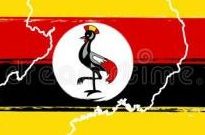
How Much Is A Sack Of Cassava In Uganda
What Is Cassava?
Cassava is a calorie-rich vegetable that contains plenty of carbohydrates and key vitamins and minerals. Cassava is a good source of vitamin C, thiamine, riboflavin, and niacin. The leaves, which are also edible if a person cooks them or dries them in the sun, can contain up to 25% protein.
How Much Is A Sack Of Cassava In Uganda?
The price in Uganda Shilling is UGX 978.19 per kg. The average price for a tonne is UGX 1044038.00 in Jinja and Kampala.
What Is The Land Preparation For Cassava In Uganda?
Cassava has been grown in Thailand for many years. Land is usually prepared by plowing with a 3-disk plow followed by a 7-disk harrow and ridging. This method of land preparation results in a very loose soil, which is free of weeds and easy to plant.
How Long Does Cassava Take To Grow In Uganda?
Generally cassava reaches maturity in 9-24 months or up to 36 months depending on the variety, climate and soil conditions. Some quick growing cultivars can be harvested in 6-7 months, but good yields are normally obtained after 9-12 months.
Can Cassava And Maize Be Planted Together In Uganda?
Cassava can be intercropped with other crops such as yam, maize and vegetables.
How Do You Remove Toxin From Cassava Root In Uganda?
The best processing method for the use of cassava leaves as human food is pounding the leaves and cooking the mash in water. Fermentation, boiling, and ensiling are efficient techniques for removing cyanide from cassava peels.
Which Part Of Cassava Is Toxic In Uganda?
Cassava, an edible tuberous root often made into flour, contains cyanogenic glycosides, which can result in fatal cyanide poisoning if not properly detoxified by soaking, drying, and scraping before being consumed.
Which Month Is Best To Plant Cassava In Uganda?
Masika is the long rainy season which occurs from March to June. Although some farmers plant cassava in Masika, it’s more common for them to plant during the short “Vuli” rainy season, which runs from October to December.
What Is The Correct Spacing For Cassava Planting In Uganda?
The optimal cassava plant spacing is 1 meter by 1 meter apart along each row and across ridges or mounds. The remaining space between the cassava plants can be used you grow vegetables, maize, legumes, and other plants.
What Is The Best Fertilizer For Cassava In Uganda?
Initially, cassava should be fertilized with equal amounts of N, phosphorus pentoxide (P2O5) and potassium oxide (K2O) at a rate of 500 kg to 800 kg per ha of a compound fertilizer such as 15-15-15 or 16-16-16.
What Is The Major Problem With Cassava In Uganda?
The current cassava productivity is near the lower end of internationally reported yields. Among major constraints are: prevalence of devastating pests/diseases, shortage of planting material; drought, poor soil fertility, use of varieties with low genetic potential; and low adoption rates of research recommendations.
What Challenges Farmers Are Facing When Growing Cassava In Uganda?
Other challenges are long maturation duration, low and unstable dry matter and starch contents, high cyanogenic levels, poor cooking qualities, cassava bacterial blight and root rot in forested areas. Unfavourable plant architecture and low nitrogen use efficiency will also need attention.
How Can Cassava Poisoning Be Prevented In Uganda?
Cutting the roots into small pieces, followed by soaking and boiling in water is particularly effective in reducing the cyanide content in cassava.
How Many Tons Of Cassava Can One Acre Produce In Uganda?
The yield from an acre of cassava ranges 4-8 MT, which translates into 1.5-4 metric tons of dried cassava chips and 1.2 -2.5 metric tons of cassava flour.
How Profitable Is Cassava Farming In Uganda?
A farmer will earn Shs2. 5m from a tonne of cassava on local market. The local breed can only give you four to five tonnes per acre. For one plant (stool) of Narocass1, you can get 8-25 root tubers.
How Do You Remove Cyanide From Cassava In Uganda?
As with soaking, the free cyanide of cassava chips is rapidly lost in boiling water. About 90% of free cyanide is removed within 15 minutes of boiling fresh cassava chips, compared to a 55% reduction in bound cyanide after 25 minutes
Is Cassava Business Profitable In Uganda?
Considering the ease of cultivating cassava, reduced inputs, hardiness of the cassava plant, and also its high market demand, cassava farming is conclusively the most lucrative agribusiness for all and sundry.
What Is The Maturity Period Of Cassava In Uganda?
If cassava is used as a vegetable the tubers are harvested within 12 months to avoid fibrous tubers, but cassava used for starch processing are left to reach full maturity, often up to 18 to 24 months after planting. The indication of maturity is when you see leaves beginning to become yellow and fall.
Is Cassava Good For Diabetics In Uganda?
Cassava has a low glycemic index of 46, which means that it is less likely than some foods to cause a rapid rise in blood glucose levels. If you have diabetes, cassava could be a healthier choice than white potatoes, which have a high glycemic index of 85.
Is Boiled Cassava Healthy In Uganda?
Cassava is an excellent source of vitamin C, which is great for supporting immune health as well as natural collagen production. One cup of the cooked root vegetable contains 29 milligrams of vitamin C, which is roughly 39 percent of your recommended daily intake.
